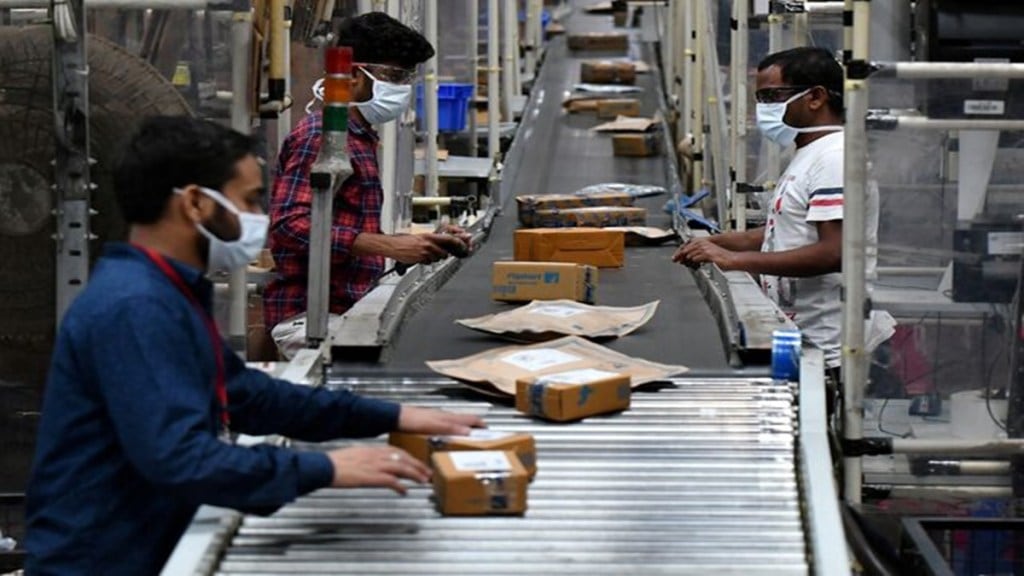– By Chandan Singh Ghugtyal
Over the past five years, the Indian e-commerce landscape has witnessed a revolutionary transformation. Especially with D2C brands setting their foot and gaining dominance, conventional marketplaces have been facing significant challenges. Moreover, with the emergence of new-age technologies D2C industry has gained amplified reach and prominence, cementing their position in the Indian market. According to a Mordor Intelligence report, the Indian D2C E-commerce Market size is estimated to reach $ 87.5 billion in 2025, and $ 267.03 billion by 2030, at a CAGR of 25% during the forecast period. This statistical figure is a testament to the positive growth trajectory of the D2C market.
One key driver of the success for the D2C segment is shipping and logistics. While shipping and logistics, as an industry in itself, has been prone to disruptions, thanks to pandemic, it has simultaneously been a hub of innovation. As per Mordor intelligence, the Indian Freight and Logistics market size is estimated at $ 349.4 billion in 2025, and is expected to reach $ 545.6 billion by 2030, growing at a CAGR of 9.32% during the forecast period. The industry is expected to continue expanding steadily and vigorously as it gets ready for 2025, supporting D2C growth.
With the 2025 budget all set to be unveiled on 1st February, the D2C sector is eying significant developments. The industry projects the government to simplify compliance to spur growth and advance the country’s economic development, as well as to provide measures that would sustain and intensify the positive trajectory that was observed in 2024.
Here’s a look at what D2C players are expecting from the upcoming budget:
Facilitate compliance: The D2C ecosystem has been often exposed to challenges surrounding regulations and compliance. Especially when it comes to tax regulations such as GST, the comprehensive documentation process can create barriers to seamless business operations. Thus, the D2C players urge the government to introduce a centralized and transparent checklist for GSTN registration. A streamlined approach will enable the brands to target expansion while focusing on growth, innovation, and customer satisfaction.
Affordable access to digital tools: New-age technologies have become the modern-day rulers of industries and D2C is no stranger to it. Artificial intelligence and Blockchain technology, amongst others, are automating the world of shipping, enhancing supply chain visibility. In order to regulate inventory, enhance tracking and elevate real-time management, D2C brands require economical access to these technology-oriented tools. According to a PwC report, only 50% of Indian logistics companies are using technology at scale, which indicates a large opportunity for improvement. Thus, the D2C brands expect the budget 2025 to launch initiatives to encourage the adoption of advanced technologies. In addition, subsidies for integrating digital efforts could help smaller D2C players compete on a larger scale.
Encourage sustainable business practices: Sustainability and greener business efforts have been a matter of discussion for years. However, with frequent natural disasters becoming the norm amid climate change, the need for adoption of sustainable practices by industries has become paramount with the D2C sector being no exception. But moving to green delivery approaches comes with high upfront costs. In a World Economic Forum study, 75% of logistics companies cited the high initial investment in green technologies as a major barrier to adopting sustainable practices. The budget 2025 could encourage the sustainable method adoption amongst the D2C brands by supporting tax reliefs and promoting renewable energy initiatives within logistics operations to make sustainability more accessible to D2C brands.
Budget 2025: A promising future ahead
India’s D2C market is equipped for rapid expansion and is projected to reach $60 billion by FY27, according to a joint report by CII and Praxis Global Alliance. While the D2C sector is currently experiencing growth, the government’s backing is essential to establish a robust and sustainable D2C ecosystem in India. With the 2025 budget around the corner, industry participants are optimistic about the essential reforms that will drive the sector’s expansion. At the behest of right initiatives, the government can address operational challenges within the shipping industry while empowering D2C brands.
By emphasising technology, sustainability and tax reforms, India carries potential to lead a shipping revolution that supports not just D2C brands but the entire digital economy. The crucial harmonization between the budgetary strategies and sector’s long-term vision is pivotal in cultivating a dynamic and flourishing D2C landscape . The shipping industry’s new frontier is here—and the 2025 Budget holds the key to unlocking its potential.
(Chandan Singh Ghugtyal is the Founder and CEO of DAAKit Technologies.)
(Disclaimer: Views expressed are personal and do not reflect the official position or policy of Financial Express Online. Reproducing this content without permission is prohibited.)
